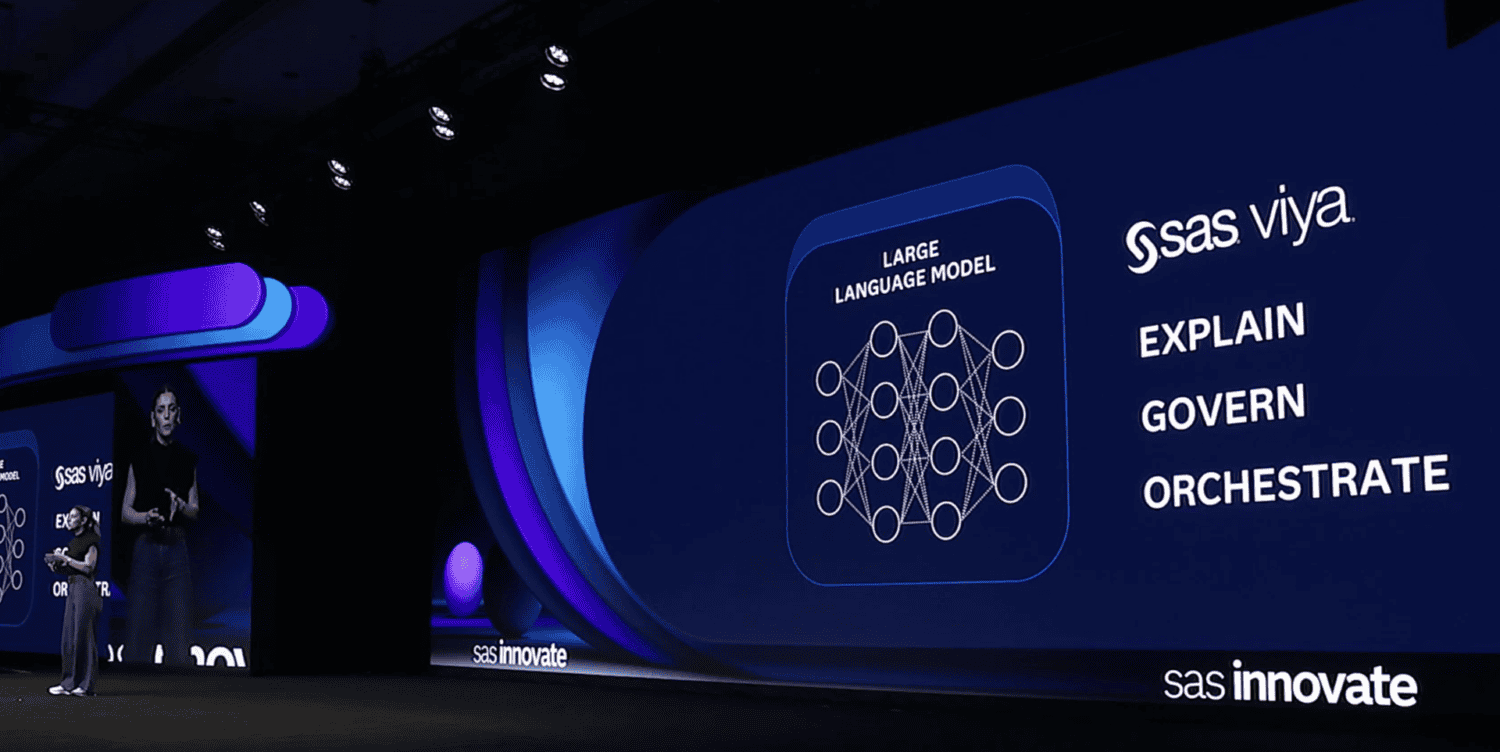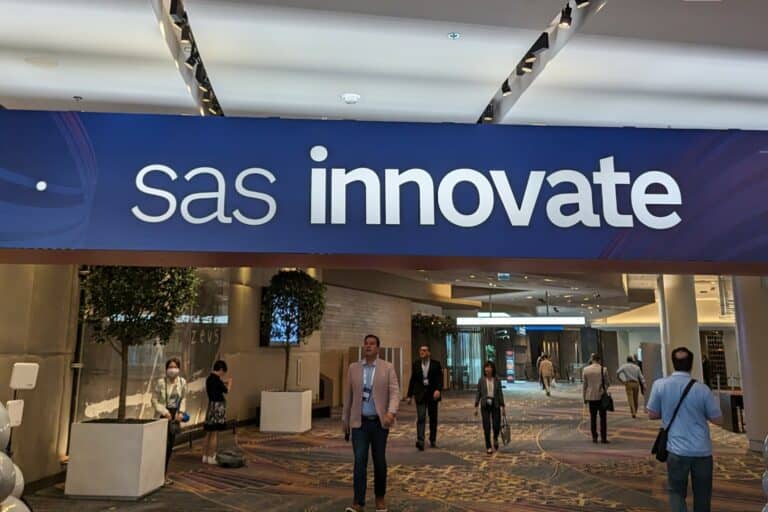The IT industry is evolving rapidly. Older companies are struggling to keep up with these developments. Or do they? SAS wants to prove otherwise and is explicitly using the company’s 47 years of existence as an asset. Is it frenetically trying to stay relevant or does the company have a good point?
Older companies in the IT industry tend to get quite a bit of bad press as they try to keep up with developments in the market. When yet another new player emerges in a particular field, the established players have to try and keep up. No one wants to be the “new Kodak”, or any other big player that failed to wake up and smell the coffee. As a result, older companies invest a lot to keep this from happening.
We don’t like the trend of writing off old IT companies as soon as something new comes along. Those old companies have been around for a long time for a reason. They have done something of importance, and they’ve done it really well. After all, many other companies that were founded at the same time no longer exist. It is a bit disrespectful to write off the old companies when a new technology emerges, in our opinion. They have dealt with disruptive change many times in the past. There’s no reason to assume they won’t be able to this time.
There are plenty of examples of companies that have adjusted to market trends several times during their existence. Consider, for example, a company like NetApp. That has had to reinvent itself several times over the past 30-plus years (and has done so quite successfully). Even in the slightly shorter period that Nutanix has been around, it has essentially started over three times, successfully. And then there are companies like IBM and HP/HPE. These have split up to keep up with changing times. The idea behind this is that the smaller business units can then innovate faster.
SAS is proud of its age
During SAS Innovate, which recently took place in Las Vegas, we noticed that company spokespeople often talked in keynotes and interviews about the fact that SAS is now 47 years old. That is definitely a very respectable age in the IT industry. The fact that various people mentioned it multiple times felt deliberate. To us, it is clear that SAS clearly wants to get a message out into the world with this. So we started asking some questions about this at the event.
When we asked CTO Bryan Harris about the pluses and minuses of SAS’ age, he indicated that SAS “always wants to reintroduce itself to customers.” In doing so, he indicates that the age of 47 is, to some extent, only relative. A customer who already bought into a certain part of the SAS portfolio is perfectly fine with being approached about something completely new as if they were being introduced to SAS for the first time. There are parts of SAS’s stack that are as young as a start-up’s offering, so that makes perfect sense.
The above conversations are basically the “easy” sales pitches. That is, they presume a greenfield environment for SAS in order to be able to sell solutions like Data Maker, but also to attract new and existing customers coming in on the Viya platform. However, the big challenge for SAS is primarily in establishing an evergreen business. Harris also points this out when he states that the goal is to get as many customers on the latest release as possible. Viya obviously plays an important role in this. Moving everyone from SAS 9 to Viya is not realistic (and in some cases not at all desirable), but the goal is to do so for as many customers as possible. Of course, the current boom around AI also helps with that. “When we present our data and AI lifecycle to customers, we completely blow them away,” according to Harris.
Where is the growth coming from for SAS?
Harris doesn’t see the truly spectacular growth for SAS coming from its “traditional” offerings. It is mainly the solutions such as Data Maker and the new off-the-shelf models by use case/sector that he expects a lot from. This is also what Udo Sglavo, VP of Applied AI & Modeling R&D at SAS, indicates when we ask him a few questions. However, he also immediately gives an argument as to why, when it comes to the off-the-shelf models (read more about that via the link below), SAS’ age is precisely a big advantage. “This is not a startup topic. They may have the technology, but they don’t have the expertise to actually create it,” he believes. SAS already has much more experience in this area and can now put it to good use.
Also read: SAS wants to make AI models and AI modeling as accessible as possible
Finally, Jared Peterson, SVP Engineering at SAS, adds some input to the conversation. He immediately points out that keeping the non-evergreen parts of SAS up-to-date is definitely a big challenge. He cites the example of how SAS must be able to combine its rich proprietary development language with the changing world around it. Specifically, in this regard, he talks about the current relevance of Python and R. “How do you respond to that?” he asks somewhat rhetorically. SAS must and does respond to it, or you will indeed lose relevance. From an R&D perspective, this means there is a clear push to get SAS 9 customers toward Viya. This allows SAS as a whole to respond much better to change. However, this does not mean that there is no more investment in SAS 9. It does mean that a separate division has been built around it.
Knowing where and how to invest is undoubtedly one of the biggest challenges facing SAS. The company is investing in at least four areas. First, it is investing heavily in Viya, including the very popular Viya Workbench offering. After all, that is the future of SAS’ analytics (and AI) platform. It is also still investing in SAS 9, since it still has quite a few customers on that. Then it invests a lot in migrating from one environment to another. Finally, there are investments such as those in SaaS tools like Data Maker and the models that Sglavo is responsible for. That’s also going at a billion dollars in a year, so SAS is putting a lot of focus on that too.
2024 is a good year for SAS
All in all, we get the idea that there is a very clear vision at SAS to evolve with the market. At least the company is not trying to hold on to the older parts of the platform at all costs in order to get as much revenue from them as long as possible. The challenge for SAS to move toward evergreen as much as possible is certainly great, but it is possible to do it. We saw that with IFS, for example. That company also had many customers on the old platform, but has now moved many of them onto the new cloud platform.
Granted, IFS was and is a smaller company than SAS, but size doesn’t really matter all that much here. The point is that we see something similar happening at SAS. Viya is already 25 percent of the company’s revenue. This is expected to continue to grow rapidly, spurred by the continuous innovations in this offering.
The reason we think SAS is going to succeed in its plan to get as many customers to Viya as possible is that it seems to have its priorities well in place. In particular, launching many new growth products and services is a good sign in that regard. The fact that SAS has been profitable for 47 years, as Harris finely points out in conversation with us, also helps in this regard. That means that is has the funds to invest in its own stack in the first place. It remains to be seen how this will go once SAS has its planned IPO, of course. After an IPO, things may change in fundamental ways.
2024 could (and perhaps should) certainly be a good year for SAS, as the hype surrounding AI has subsided compared to last year. “That makes our AI story this year much better than last year,” Harris points out. That has mainly to do with SAS taking a pragmatic approach. It has to, because SAS is not a pure GenAI player, but is coming at it from the classic AI angle.
“Many companies realized breakthroughs, but they didn’t know what they mean for organizations,” according to Harris. That won’t happen to SAS, is what we hear when he says this. Partly because this is not where SAS sees the added value of AI, but also certainly because the company knows the ropes well and knows that a pragmatic approach will take them much further. It can also know this thanks to the years of experience it has as a company.
Pragmatic AI applications seem to be winning out over the castles in the sky that we encountered way too often last year. Pragmatism is a sign of coming of age. That SAS has definitely come at 47. Now it is a matter of good execution. The early signs for this are good. It is going to be very interesting to see where it goes from here.

